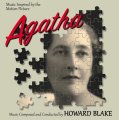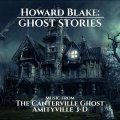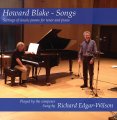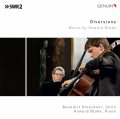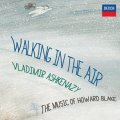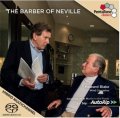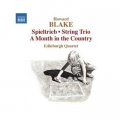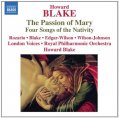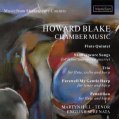 Highbridge Music Ltd.
Highbridge Music Ltd.
Studio 6, 18 Kensington Court Place, London W8 5BJ, UK
Email: howard@howardblake.com

HOWARD BLAKE Short biography
(May 18th 2015)
Groves Dictionary of Music and Musicians states that ‘Howard Blake has achieved fame as pianist, conductor and composer.’ He grew up in Brighton, at 18 winning a scholarship to The Royal Academy of Music where he studied piano with Harold Craxton and composition with Howard Ferguson. In the early part of an intensely active career he wrote numerous film scores, including 'The Duellists' with Ridley Scott which gained the Special Jury Award at the Cannes Festival, 'A Month in the Country' which gained him the British Film Institute Anthony Asquith Award for musical excellence, and 'The Snowman', nominated for an Oscar after its first screening. His famous song ‘Walking in the Air’ was the chart success that launched Aled Jones in 1985, whilst the concert version for narrator and orchestra is performed world-wide and the full-length ballet for Sadler’s Wells runs for a season every year in London. Concert works include the Piano Concerto commissioned for Princess Diana, the Violin Concerto commissioned for the City of Leeds; the Clarinet Concerto commissioned by Thea King and the English Chamber Orchestra and large-scale choral/orchestral works such as 'Benedictus' and ‘The Passion of Mary’ both recorded with the RPO. He is increasingly adding to his catalogue of CDs which includes Sir Neville Marriner conducting the woodwind concertos with The Academy of St. Martin in the Fields and 'Walking in the Air' - the piano music of Howard Blake - recorded by Vladimir Ashkenazy. He was made a Fellow of the Royal Academy of Music in 1988 and received the OBE for services to music from the Queen in 1994.
Biographical note
Howard Blake as pianist
Blake is best-known as a composer, but began as a classical concert-pianist, at eighteen winning The John Lockey Festival Scholarship to the Royal Academy of Music to study with Harold Craxton. As a student he played many professional concerts as duo-partner to the celebrated violinist Miles Baster, who was to form and lead the Edinburgh String quartet. This experience provided a strong grounding in the performance of chamber music.
A fellow-student was the Icelandic prodigy Thorunn 'Dody' Tryggvaason for whom he composed a virtuoso piano work, 'Variations on a theme of Bartok', which she premiered in her farewell RAM recital. Soon to leave for Moscow and marry Vladimir Ashkenazy this early contact had an important impact on Howard’s future life. For instance the creation of the 24 piano pieces 'Lifecycle' was composed at the suggestion of Ashkenazy who had became a friend and later was to record a comprehensive album of Blake''s piano works on Decca.
On leaving the Academy in the early Sixties Howard branched out into different forms and styles of music and his ability both to sight-read and play almost anything by ear, coupled with an innate ability to play jazz and popular music, furnished him with a job as 'in-house pianist' at Abbey Road Studios, his very first recording being the number one hit 'Thank you very much' with Paul McCartney on tambourine!
He found that he loved this work and the other worlds of film and television music with with which it was connected and went on to work with innumerable people who helped to advance his career. He worked for Quincy Jones as conductor on the album of the Cinerame epic 'McKenna's Gold' and as pianist on the film 'The Italian Job', He arranged music for Henry Mancini on Victor/Victoria and 'Pink Panther Strikes Back'. He was introduced to composer Bernard Herrmann to whom he introduced the Moog synthesizer, becoming an assistant and arranger for him on the film 'A Twisted Nerve'. It was Benny who helped him become composer, conductor and musical director for the global TV series 'The Avengers'. (1967-9).
The downside of 'The Avengers' was that it stopped him playing the piano since he was simply too busy composing. However, when he dropped out of the London scene in 1971 and moved to the idyllic Highbridge Mill down in Sussex, he there resolved not only to start writing his own 'serious' music but also to start all over again with his classical piano playing. He gave a solo piano recital in mid-Sussex and later repeated it on BBC Radio. He started a piano quartet with violinist Jack Rothstein, violist Kenneth Essex and cellist Peter Willison and for them created an entire concert of chamber music. It included 'Diversions for Cello', the 'Violin Sonata' and the' Piano Quartet', all three of which rank as staple works of his chamber music output.
The idyllic period of the mill was sadly brought to a halt in 1980 by disasters surrounding the premiere of his large-scale vocal/orchestral work 'Benedictus'. He returned to London and re-immersed himself in composing commissions, hardly playing at all until a marvellous opportunity was suddenly offered. He writes:
'Just before Christmas 1989 Rodney Stewart, the chairman of The Philharmonia rang me and asked if I would compose a Piano Concerto for Princess Diana's 30th Birthday - a full-scale commission. This was a wonderful thing to happen and I immediately started sketching ideas. But they were less than inspired! Nothing but the best would be suitable for Diana, the people's princess, whom I adored as much as everybody did. I started looking at scores of piano concertos by great composers, and wondering if I dare write one at all. It was a most daunting prospect.
On Valentine's Day 1990 it happened that colleagues came to dinner at my studio and we talked about the Princess. I remember saying that I would like the concerto to be a portrait of her, with an opening motif which should contain the possibilities of a complete picture within it - a simple motif, innocent and gay, full of life and compassion and joy. I went over to the piano and played a simple 4-note motif that came into my head from nowhere at all. I knew immediately that it could be the basis of the work. I kept hearing the opening in my head but although I continually wrote sketches I could never get any further to my satisfaction. One afternoon after lunch I dozed off and dreamed of a counter-melody set against it, but unbelievably high up. I wrote it down for very high violins. The combination of these two strands worked wonderfully and the whole of the first movement derived from it. It was a big first movement of about twelve and a half minutes and I was delighted with the form of it, brought to a close, quite unusually, by a cadenza. I rang The Philharmonia and asked if they had got anyone to agree to play it yet.
They were having difficulty. Evgeny Kissin had been proposed but he hadn't the time and all the other big pianists seemed either to be engaged for years in advance or didn't have time to learn a new work. Rodney said that 'the boys all say you could play it yourself' - 'boys' being the members of The Philharmonia. I considered this. I said that I would have to practise extremely hard. This didn't seem to bother them but it certainly bothered me. As I wrote the second and third movements I started to practise the solo part. Meanwhile CBS/Sony seemed to be delighted by the idea of an album: 'Concerto for a Princess'. With it we could record the cello concerto 'Diversions' and the concerto for orchestra, 'Toccata' and dates were fixed for a recording in December.
I practised the concerto like mad once I'd finished it. The recordings took place on 19-21 December and went wonderfully, with Sir David Willcocks conducting the concerto and myself conducting Diversions and Toccata. Robert Cohen was the soloist in 'Diversions' and Christopher Palmer produced the album. I played the solo piano part from memory on the brand-new £90,000 Fazioli concert grand which Sony studios had just bought. It felt as if I'd done it all my life and these sessions for me were like going to heaven.
Not so for Ian Groves from Sony. He came to hear Toccata and was scared stiff. He was unused to classical orchestral sessions and thought I was bullying the players. In fact everybody was enjoying themselves immensely even if it was exacting. But I started to wonder how he would manage with the Royals!
The concert at the RFH with Princess Diana was due to take place on 19th May. We had recorded the album in December to give plenty of time to get the album out. To me it seemed as if the offer of a piano concerto commission for Diana was the greatest opportunity for a record company that one could possibly imagine. But then I was told that the Palace did not want to have publicity in regard to the concerto, which was a great disappointment.
The RFH concert on May 19 was wonderful. I had considerable nerves. I lay on the couch in the solo artists dressing room and thought the concerto through to check memory. Half way through the first movement I couldn't remember what should happen next. I began to sweat. Then I thought: I just have to go out there and trust. Jump off the cliff. I walked out onto the platform looking up at HRH Diana, The Princess of Wales in the Royal Box looking magnificent in a blue dress with a diamond tiara. I sat down with the orchestra and the minute I began all was magical. I thought: this is the most marvellous thing one could do in this world. To play my own music supported by an orchestra of 'angels'. We invited many friends to the dressing room for champagne. The artists were invited to meet the Princess and I spoke to her for quite a while and was utterly charmed. She was well-informed on music and radiated interest and delight in life. Jonathan Morrish who ran PR at Sony managed to get a photo of me with Diana and I gave her a copy of the new CD with the concerto and a score of it that I had had bound in silk at Asprey's. I received a lovely letter from her, thanking me.'
Although I was to play the concerto several more times at that period my main energies turned back once again to composing and it was only when I started to perform my own works on disk, first with Madeleine Mirchell in 2005 on the Naxos album 'Music for piano and strings', that I again took it seriously.
I took it even more seriously in 2009 when approached by the brilliant young German cellist Benedict Kloeckner who had won the top EU prize by playing my 'Diversions' in the original version for cello and piano. Together we made a virtuosic album of my works for piano and cello named 'Diversions' which was released by the German label Genuin in 2015 and received considerable critical acclaim (see reviews.)
In August 2016 I acted as pianist to the tenor Richard Edgar Wilson in recording an album of vocal works composed over the whole span of my lifetime.'

